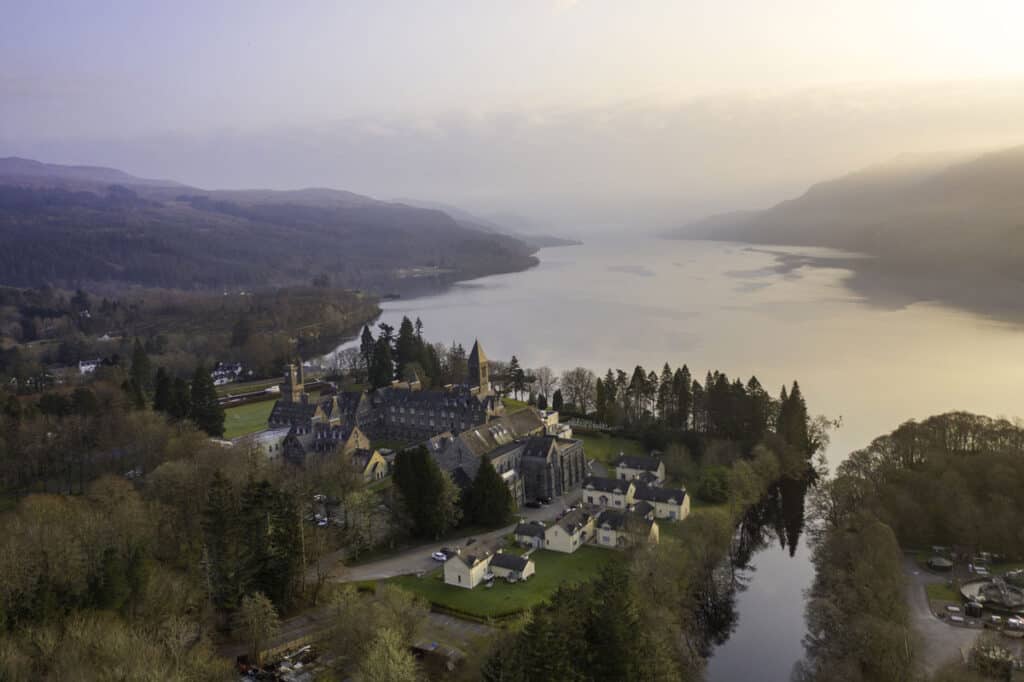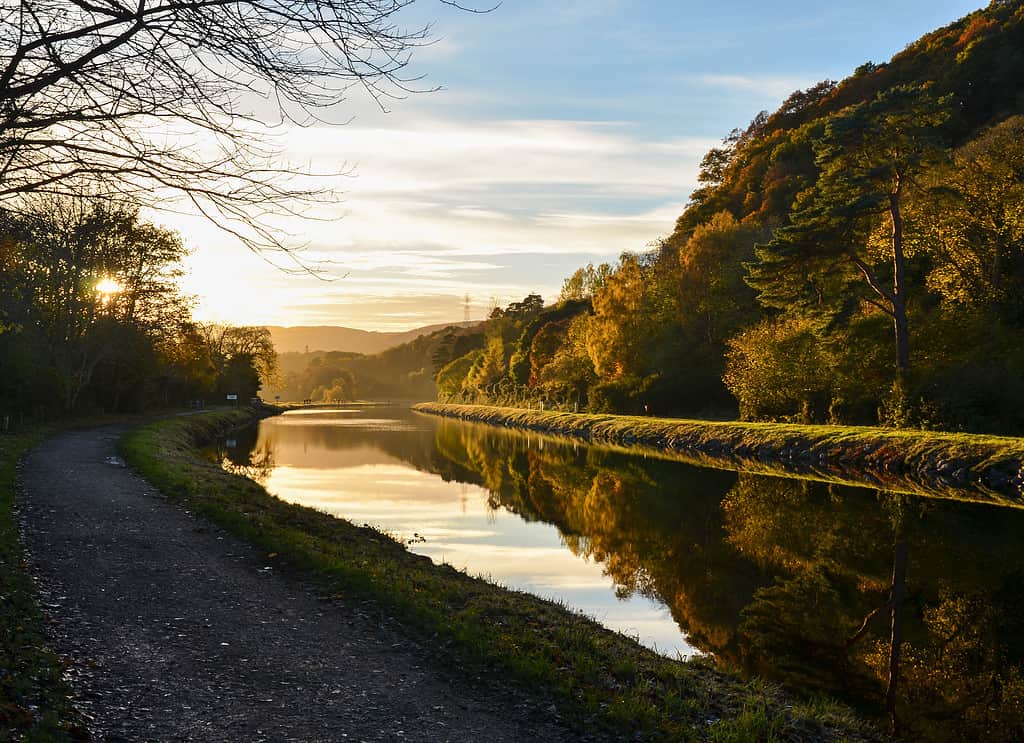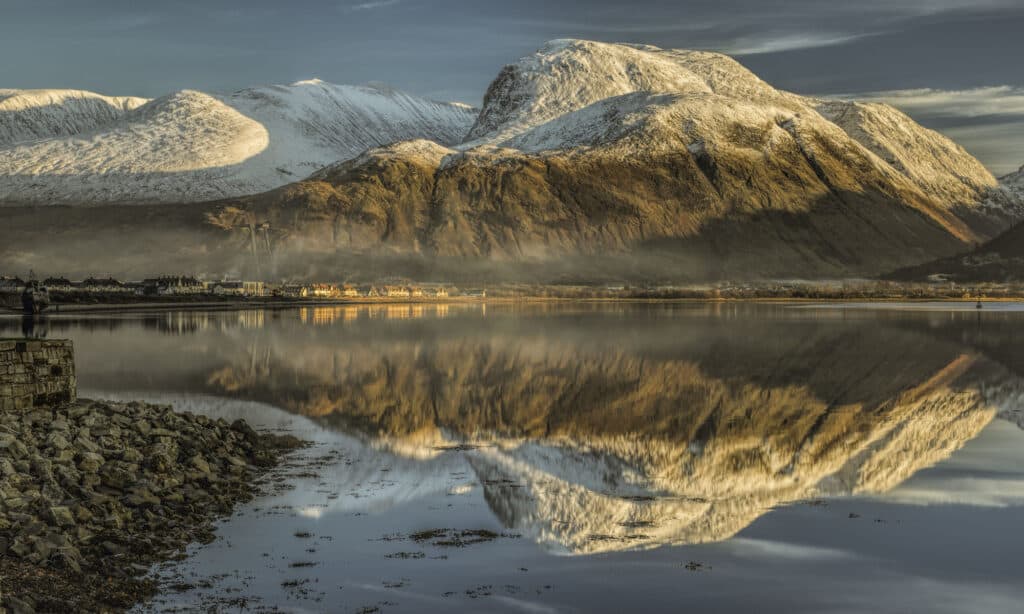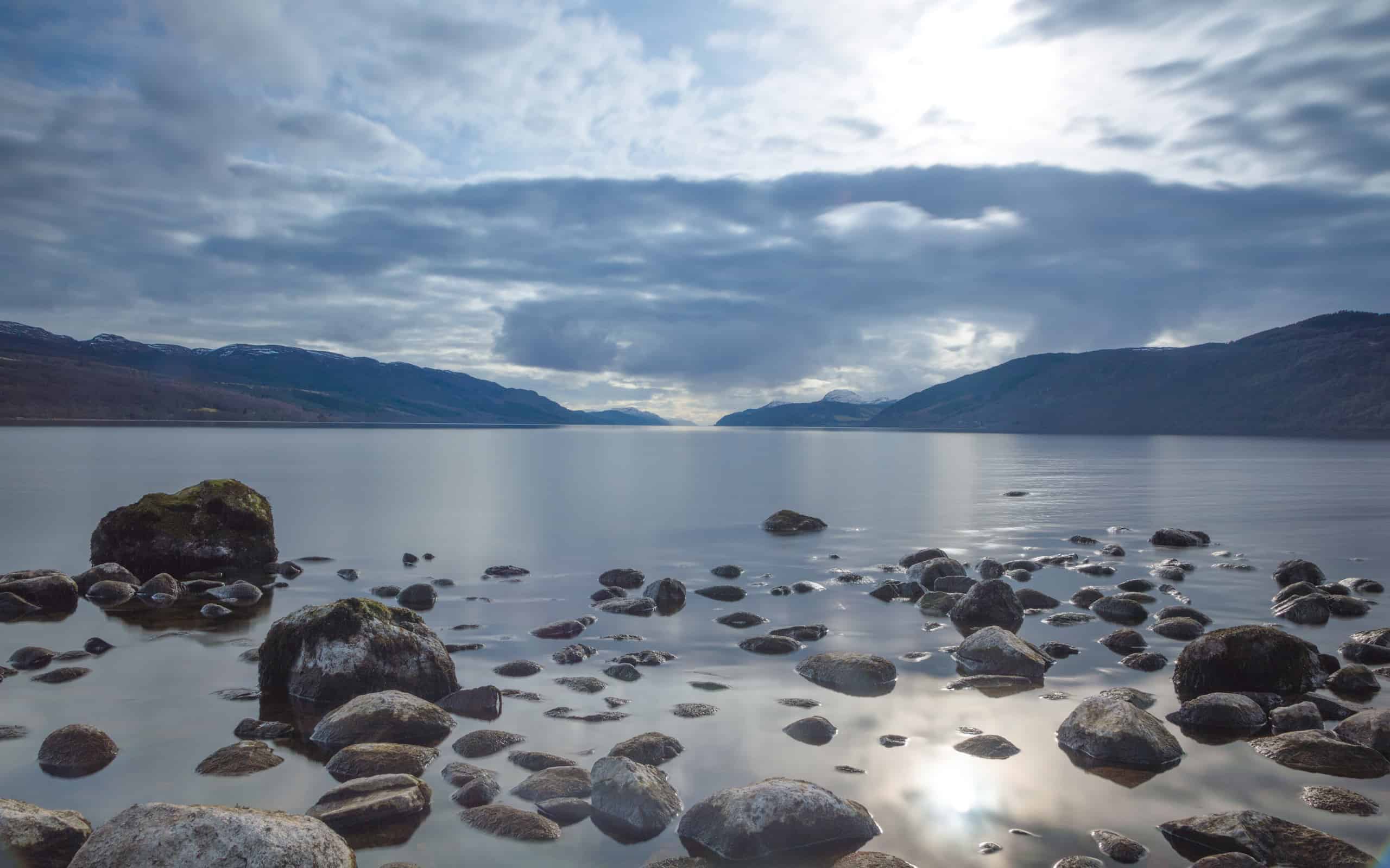
Scientists have conducted DNA tests on water samples to determine what lives at the bottom of Loch Ness.
©iStock.com/CloudVisual
Everyone has heard of the Loch Ness Monster, Nessie, but does anyone know where Loch Ness is or even which country it’s located in? The seemingly endless search for the Loch Ness Monster has gone on for 1300 years, so one would hope that at least some of us know where it is and have even visited it.
Many have hung onto the speculation of the Loch for our entire lives and have looped in the Loch to be as mythical as the monster that supposedly lies within it. The Loch is very much real, as is its unearthly beauty. Some say it is the most breathtaking place they have ever seen. Others are lucky enough to live in the Scotland Highlands nearby and can enjoy the magical bliss it strikes in the hearts of many.
The Magic of Scotland’s Highlands

The famous Urquhart Castle at Loch Ness in Scotland’s Highlands overlooks the famous lake.
©Jule_Berlin/iStock via Getty Images
The Scotland Highlands spanning 10,000 square miles, are a place filled with mesmerizing castles, picturesque mountains, majestic herds of red deer, and course, the Loch. At the center of the Scottish Highlands is the Loch Ness, which is overlooked by the crumbling medieval Urquhart Castle. Urquhart Castle has seen its fair share of bloodshed multiple times. It once was the place where Saint Columba performed miracles and where the English and Scottish went to war over the castle’s ownership from the 14th – 17th Centuries. In the 6th Century, a man was attacked by a sea beast in the Loch. Shortly afterward, Saint Columba was said to have saved a man from the supposed Loch Ness Monster. Many sightings have taken place nearby.
The Loch Ness

A view across Loch Ness looking down the length of the lake with rocks in the foreground and dark clouds above, in Scotland, UK.
©Luke Richardson/iStock via Getty Images
The Loch Ness takes up 13,937 acres and sits 52 feet above sea level. It is 755 feet deep, leaving it cold year-round. It contains more water than all the lakes in England and Wales combined. On the southeast side of the Loch is the Monadh Liath. Monadh Liath means grey mountain range in Scottish Gaelic.
To the northeast of the Loch is the city of Inverness, and to the southwest is the highest peak in Scotland and the UK, Ben Nevis. Inverness is the closest city to the Loch Ness, which is 13.9 miles away. The Loch got its name from the River Ness on its northern end.
Also on the northern end of the Loch are the breathtaking and underrated Plodda Falls and the pebbly-shored Dores Beach. There is even a town dedicated to Nessie called Drumnadrochit. Throughout the town, people can learn, explore, and purchase all things Nessie.
The south end of the Loch lies near Fort Augustus, also called Cill Chuimein in Gaelic. Built by General Wade, the fort gained its name after the Jacobite rising in 1715 and was named after Prince William Augustus, Duke of Cumberland.
Waterways Near the Loch Ness

The Caledonian Canal was completed in 1822 and runs through the Great Glen, a geological fault in the Earth’s crust.
©mwalent/iStock via Getty Images
The Loch Ness is located in northwestern Scotland in the Highlands. It sits in the middle, interlocked by other waterways. The Bona Narrows, at the northern end of the loch, which leads to the Loch Dochfour. The Loch Dochfour leads into the River Ness, which creates a piece of Caledonian Canal that leads to the Moray Firth and then finally to the North Sea. At the southern end of the loch is the River Oich and a section of the Caledonian Canal. From the canal, the water leads to Loch Och.
In Other Words

All of Scotland is beautiful, but the area around the Loch Ness is superb.
©brunacanavezi/Shutterstock.com
If you are still a bit confused with where the Loch Ness is, just look at a map of Scotland. The long thin body of water in the northern half of the country is the loch. It is 580 miles from London, England.
The Loch Ness is a one-of-a-kind place with amazing views and tons to do. The area survives off tourism and gladly welcomes it. There is plenty to do, from Nessie boat rides to amazing trails; Northern Scotland doesn’t miss a beat as far as natural beauty goes!
Since the latest installment of the hunt for the Loch Ness Monster is currently underway, now would be a memorable but slightly crowded time to visit the Scottish Highlands. With the culture, history, Loch Ness, and the exquisite mountain ranges boasting huge waterfalls, it’s a place everyone should visit.
FAQ

©Harry Feather/Shutterstock.com
Q: Is Loch Ness freshwater or seawater?
A: Loch Ness is a deep freshwater loch or lake that is the largest by volume in Scotland.
Q: Is it safe to swim in Loch Ness?
A: It is not safe to swim in Loch Ness, not because of terrifying monsters but because of the extremely cold temperature of the loch. Even if it is a hot day, the water is always cold because of its depth. Swimmers have swam the length of the lock but they have all been trained to do so in very cold water and have dressed appropriately. There is a very real risk of hypothermia if a person tries to swim, even if close to the shore.
Q: What does Ness mean in Scottish?
A: Ness is a gender-neutral name or term meaning “from the headland.” It may have come from the ancient Greek term Nestor for “homecoming” or “to return safely.”
Thank you for reading! Have some feedback for us? Contact the AZ Animals editorial team.








